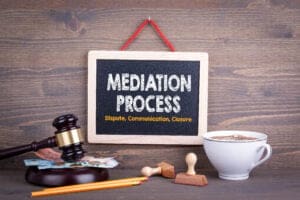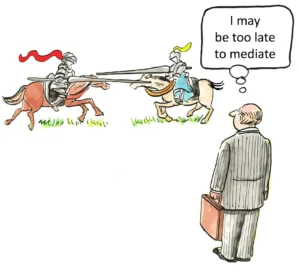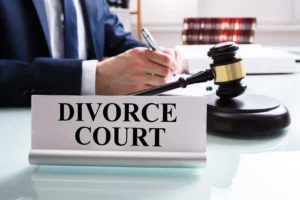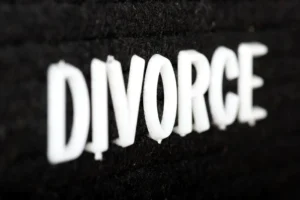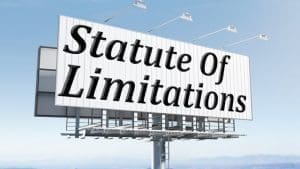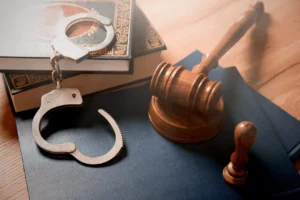Dynamic Editing Techniques That Keep Viewers Engaged Throughout Clips
In the competitive landscape of legal marketing, mastering dynamic editing techniques has become essential for attorneys seeking to maintain viewer engagement throughout their video content. The modern attention economy demands more than just informative legal explanations—it requires strategic visual storytelling that captures and sustains viewer interest from the first frame to the last. As digital platforms increasingly prioritize video content, law firms that implement sophisticated editing approaches gain a significant advantage in client acquisition and brand development.
The legal profession has traditionally relied on formal, text-heavy communication methods that often fail to resonate with today’s visually-oriented audiences. Video content offers a powerful alternative, allowing attorneys to demonstrate expertise while establishing personal connections with potential clients. However, merely recording standard talking-head footage no longer suffices in a media environment where viewers make split-second decisions about whether content deserves their continued attention. The implementation of dynamic editing techniques transforms ordinary legal explanations into compelling narratives that keep viewers engaged throughout the entire presentation.
Recent data underscores this reality, with studies showing that videos optimized for engagement generate substantially higher conversion rates for professional service providers. According to the American Bar Association’s technology survey, only about 24% of law firms currently utilize video as part of their marketing strategy—creating a significant opportunity for forward-thinking attorneys to differentiate themselves through superior video content. By mastering techniques like strategic pacing, thoughtful transitions, and effective visual storytelling, legal professionals can create content that not only informs but genuinely engages their target audience.
The Psychology of Viewer Engagement
Understanding the psychological principles that govern viewer attention provides the foundation for effective video editing strategies. The human brain processes visual information differently than written text, with neurological research confirming that dynamic visual content activates multiple brain regions simultaneously. This multisensory stimulation, when properly harnessed through strategic editing techniques, creates a more immersive and memorable experience for viewers seeking legal information.
Attention spans in digital environments have demonstrably shortened, with viewers making subconscious decisions about content value within the first few seconds of playback. This psychological reality necessitates what industry professionals call the “strong hook”—an opening sequence specifically designed to capture immediate interest. For legal content creators, this might involve beginning with a compelling client scenario, a surprising legal fact, or a visually striking introduction that signals the video’s relevance to the viewer’s needs. The effectiveness of this approach stems from the brain’s tendency to filter information based on perceived immediate value, making those initial seconds crucial for establishing viewer commitment.
The concept of cognitive load also significantly influences viewer engagement with legal video content. When complex legal concepts are presented without visual reinforcement or strategic pacing, viewers experience increased cognitive burden, often leading to disengagement. Effective editing techniques mitigate this burden by breaking complex information into digestible segments, using visual cues to highlight key points, and varying the presentation rhythm to maintain mental freshness. This approach aligns with established learning principles that emphasize the importance of multiple representation systems for processing and retaining complex information—particularly relevant for legal content that often involves nuanced concepts.
Crafting the Perfect Opening Hook
The opening seconds of any legal video represent the critical threshold where viewers decide whether to continue watching or move elsewhere. Crafting a compelling hook requires understanding both the psychological triggers that capture attention and the specific concerns that motivate potential legal clients. The most effective attorney videos begin with a clear, concise statement that immediately communicates the content’s relevance to the viewer’s situation or questions.
Visual dynamics play an equally important role in creating effective opening hooks. Rather than beginning with static imagery or standard introductions, successful legal videos often employ techniques like quick cuts between relevant scenes, dynamic text overlays that highlight key questions, or emotionally resonant imagery that connects to the legal issue being addressed. For example, a personal injury attorney might open with a brief sequence showing accident aftermath followed by reassuring footage of client consultation, visually communicating both the problem and solution within seconds. This approach leverages the brain’s preference for narrative structure and emotional connection, establishing immediate engagement.
The hook should also establish the attorney’s credibility without resorting to lengthy biographical information that risks losing viewer interest. Video editing techniques like incorporating subtle visual credentials (bar associations, case results, or client testimonial snippets) during the opening sequence can establish authority while maintaining narrative momentum. The key principle remains maintaining a balance between establishing relevance, creating emotional connection, and demonstrating expertise—all within the crucial first 5-10 seconds of content. This approach recognizes that viewers make near-instantaneous judgments about content value, making those opening moments disproportionately important to overall engagement.
Strategic Pacing for Legal Content
The rhythm and flow of legal video content significantly impacts viewer retention, with strategic pacing serving as one of the most powerful dynamic editing techniques available to attorneys. Unlike entertainment content that might employ consistently rapid cutting, effective legal videos require thoughtful variation in pacing that aligns with the information being presented. Complex legal concepts may benefit from slightly slower pacing with supportive visual elements, while more straightforward information can move at a brisker tempo to maintain engagement.
The implementation of what editors call “breathing room” proves particularly effective in legal content. This technique involves intentionally varying the editing rhythm—creating moments of faster cutting followed by slightly longer shots that allow viewers to process important information. For example, when explaining a complex legal procedure, the video might use quicker cuts between different visual examples before slowing down when presenting the specific actions viewers should take. This rhythmic variation prevents the cognitive fatigue that often results from either consistently fast-paced or uniformly slow editing.
Data from viewer retention analytics confirms that videos maintaining dynamic pacing experience significantly lower drop-off rates compared to those with uniform editing rhythms. The optimal approach involves creating what editors call “micro-arcs” within the content—small narrative structures with their own pace variation that collectively form the complete video. For attorneys explaining legal concepts, this might mean breaking a complex topic into distinct segments, each with its own slight acceleration and deceleration in pacing. This technique keeps viewers mentally engaged throughout longer explanations while ensuring they can still absorb and retain the essential legal information being presented.
Effective Transitions Between Concepts
Transitions between different topics or segments represent potential vulnerability points where viewer engagement often drops. Effective legal videos employ thoughtful transition techniques that maintain continuity while signaling the movement to new information. Rather than abrupt jumps between topics, skilled editors use visual bridges that guide viewers smoothly through the content’s logical progression.
Several transition styles have proven particularly effective in legal content. The “conceptual match cut” involves transitioning between scenes that share visual similarities despite representing different concepts. For example, a video explaining contract law might transition from footage of a handshake (representing agreement) to visually similar footage of hands signing a document (representing formalization). This visual continuity helps maintain viewer attention despite the conceptual shift. Similarly, “thematic transitions” use consistent visual motifs or color schemes to connect different segments while still clearly delineating new topics.
The strategic use of motion graphics during transitions serves both functional and engagement purposes. Brief animated elements can simultaneously signal topic changes while reinforcing the video’s professional production quality. For attorneys explaining sequential legal processes, animated transitions can visually represent progression through steps, reinforcing the logical structure of the information being presented. These techniques address the fundamental challenge of maintaining viewer momentum through topic changes—particularly important in legal content where distinct concepts often need clear separation while still forming part of a cohesive narrative.
Incorporating Visual Variety
Visual monotony represents one of the primary causes of viewer disengagement in legal videos. Attorneys who rely solely on standard talking-head footage fail to leverage the full potential of video as a medium. Effective video editing for attorneys incorporates deliberate visual variety that maintains interest while reinforcing key messages. This approach recognizes that different visual presentations activate different cognitive processes, creating a more comprehensive understanding of the legal information being presented.
B-roll footage serves as a particularly valuable tool for creating visual variety. This supplementary footage—showing relevant environments, actions, or situations—provides visual context that enhances understanding while breaking the potential monotony of extended interview footage. For example, an estate planning attorney might include footage of families reviewing documents together, homes being transferred, or other relevant scenarios that illustrate the concepts being discussed. This approach not only maintains visual interest but also helps viewers conceptualize abstract legal principles through concrete visual examples.
The strategic implementation of different shot types and angles further enhances visual engagement. Alternating between wide establishing shots, medium shots for standard explanation, and close-ups for emotional emphasis creates visual rhythm that maintains attention. Similarly, varying the visual environment—showing the attorney in different professional contexts rather than a single static setting—prevents the visual fatigue that often leads to disengagement. These techniques acknowledge that visual processing involves both conscious and subconscious components, with variety serving to refresh attention mechanisms that might otherwise habituate to consistent visual stimuli.
Strategic Use of Text and Graphics
Text elements and graphics serve crucial functions in legal videos, enhancing comprehension while providing visual variety that maintains engagement. When implemented through dynamic editing techniques, these elements transform complex legal concepts into accessible visual information that reinforces the spoken content. The key lies in strategic implementation that enhances rather than distracts from the primary message.
On-screen text should emphasize key terms, statistics, or procedural steps that viewers might need to reference later. Rather than static text blocks, effective legal videos implement animated text that appears at precisely the moment the concept is discussed. This synchronization between verbal and visual information leverages dual-coding theory—the psychological principle that information presented simultaneously through multiple channels enhances retention. For attorneys explaining complex legal processes, animated text sequences can visually reinforce procedural steps while maintaining visual interest through motion design.
Infographics and data visualizations prove particularly valuable for explaining statistical or comparative legal information. When discussing success rates, timeline expectations, or statistical legal risks, visual representations communicate this information more effectively than verbal explanations alone. The most effective approach involves revealing these graphics progressively rather than presenting them as static images—allowing viewers to process the information as it builds. This technique maintains engagement through controlled information revelation while ensuring comprehension of complex legal data that might otherwise overwhelm viewers.
Sound Design and Music Integration
While visual elements often receive primary focus in discussions of video editing techniques, the strategic use of sound design and music significantly impacts viewer engagement with legal content. The auditory component creates emotional context, establishes professional tone, and provides subtle cues that guide viewers through the content’s narrative structure. Thoughtful sound implementation transforms standard legal explanations into more immersive experiences that maintain attention throughout the presentation.
Background music selection requires careful consideration of both emotional tone and practical functionality. For legal content, music should establish professionalism without overwhelming the spoken information. Instrumental tracks with moderate energy and minimal dynamic variation typically prove most effective, as they create engagement without competing for attention. The strategic adjustment of music levels during key information segments—slightly lowering volume during complex explanations before restoring it during transitional moments—creates subtle auditory signaling that helps maintain attention through longer content segments.
Sound effects and audio transitions, when used judiciously, provide additional engagement cues that enhance the viewing experience. Subtle audio elements that correspond with visual transitions create multisensory reinforcement of content structure. Similarly, strategic use of silence—briefly removing background music during particularly important statements—creates auditory emphasis that signals key information. These techniques acknowledge that engagement involves all sensory channels, with thoughtful audio implementation complementing visual elements to create a more compelling overall presentation.
Optimizing for Platform-Specific Viewing
Different digital platforms have distinct viewing environments and audience expectations that impact engagement patterns. Effective legal video marketing requires platform-specific editing approaches that optimize content for the particular context in which it will be viewed. This strategic customization acknowledges that the same legal information may require different presentation depending on whether it appears on a law firm website, YouTube, LinkedIn, or social media platforms.
Website-embedded videos typically benefit from more comprehensive information presentation, as viewers actively seeking legal information demonstrate higher initial engagement. For these platforms, editing can include more detailed explanations supported by graphics and text elements that enhance understanding. However, even website videos require dynamic pacing and visual variety to maintain engagement throughout longer durations. The strategic use of chapter markers or visual progress indicators helps viewers navigate longer content while maintaining interest in the complete presentation.
Social media platforms demand significantly different editing approaches that acknowledge the more competitive viewing environment. Videos for these platforms require more aggressive implementation of dynamic editing techniques—faster pacing, more frequent visual changes, and earlier presentation of key information. For example, a concept that might be introduced after a 30-second context-setting sequence on a website video would need presentation within the first 5-10 seconds on social platforms. This platform-specific optimization recognizes the different attention thresholds and viewing contexts that impact engagement across digital environments.
Mobile Optimization Considerations
The predominance of mobile viewing necessitates specific editing techniques that accommodate smaller screens and potentially distracted viewing environments. Legal videos optimized for mobile engagement implement several strategic approaches that maintain effectiveness despite these constraints. Understanding these mobile-specific considerations has become increasingly important as analytics consistently show that the majority of legal video content is now consumed on mobile devices.
Text elements require particular attention in mobile-optimized editing. Font sizes must remain legible on smaller screens without dominating the visual composition. Many editors implement the “40-pixel rule”—ensuring all essential text appears at minimum 40 pixels in height to maintain readability across devices. Similarly, the positioning of key visual information within the center 60% of the frame ensures visibility regardless of aspect ratio adjustments that may occur on different mobile platforms.
Editing rhythm also requires adjustment for mobile viewing contexts. Slightly faster pacing with more frequent visual changes helps maintain attention in potentially distracted mobile environments. However, this increased pace must balance with the need for comprehension of complex legal information. The most effective approach involves creating what editors call “micro-segments”—brief, visually distinct sections that each communicate a single key concept before transitioning to the next. This structure accommodates interrupted viewing patterns common to mobile consumption while still delivering complete information when viewed sequentially.
Call-to-Action Integration
The ultimate objective of most legal videos extends beyond mere information delivery to encouraging specific viewer actions. Effective attorney videos integrate calls-to-action (CTAs) that naturally emerge from the content rather than appearing as disconnected promotional elements. This integration requires thoughtful editing techniques that maintain engagement while guiding viewers toward the desired next steps.
Visual design plays a crucial role in effective CTA integration. Rather than relying solely on verbal prompts, engaging legal videos incorporate visual CTA elements that appear at strategic moments throughout the content. These visual prompts might include subtle lower-third graphics highlighting contact information during relevant explanations, or more prominent full-screen elements at natural conclusion points. The key principle involves making these elements feel like natural extensions of the information being presented rather than interruptions to the viewing experience.
The timing of CTA presentation significantly impacts effectiveness. While traditional marketing often positions calls-to-action exclusively at content conclusions, engagement data shows that strategic mid-content placement often generates higher response rates. For longer legal explanations, implementing what marketers call “progressive CTAs”—different action prompts that correspond to different information segments—acknowledges that viewers may be ready to engage at different points depending on their specific situations. This approach maintains engagement by providing relevant next steps throughout the content rather than forcing viewers to reach the conclusion before receiving guidance on potential actions.
Ethical Considerations in Legal Video Editing
The professional responsibilities of attorneys extend to their video content, requiring careful consideration of ethical boundaries when implementing dynamic editing techniques. While engagement remains important, it must never supersede the fundamental obligation to provide accurate, non-misleading information. This balance requires thoughtful editing approaches that maintain interest without crossing ethical lines.
Transparency in visual representation stands as a paramount concern. Editing techniques should never create false impressions about attorney capabilities, case outcomes, or client experiences. For example, while client testimonials can powerfully engage viewers, they must represent authentic experiences without selective editing that mischaracterizes results. Similarly, visual representations of legal processes should accurately reflect their actual complexity rather than suggesting unrealistic simplicity or guaranteed outcomes that might constitute improper promises.
The presentation of credentials and qualifications requires particular attention to ethical standards. While video editing techniques can effectively highlight an attorney’s expertise, they must do so without exaggeration or misrepresentation. Visual elements showing credentials should accurately reflect current qualifications, with editing approaches that emphasize relevant expertise without implying specializations or certifications that the attorney does not possess. This ethical approach acknowledges that engagement techniques serve their proper purpose only when they enhance the delivery of accurate, appropriate legal information.
Measuring Engagement Effectiveness
The implementation of dynamic editing techniques should include systematic measurement of their impact on viewer engagement. Analytics provide crucial feedback that allows continuous refinement of editing approaches based on actual viewer behavior rather than assumptions. This data-driven optimization creates a virtuous cycle of improvement that progressively enhances content effectiveness.
Retention graphs represent one of the most valuable analytical tools for evaluating editing effectiveness. These visualizations show exactly where viewers disengage from content, allowing precise identification of problematic segments that may benefit from re-editing. For example, if analytics consistently show viewer drop-off during explanation of a particular legal concept, that segment might require implementation of additional visual supports, adjusted pacing, or restructured information presentation. This targeted approach allows continuous improvement without requiring complete content recreation.
Comparative testing provides additional insights into editing effectiveness. Creating alternative versions of the same content with different editing approaches—varied pacing, different visual supports, or alternative structural organization—allows direct comparison of engagement metrics. This experimental approach reveals which specific editing techniques most effectively maintain viewer attention for particular types of legal information. The resulting data creates an evidence-based foundation for editing decisions that progressively enhances content performance across an attorney’s video library.
Future Trends in Legal Video Engagement
The landscape of video editing continues evolving rapidly, with emerging technologies creating new possibilities for maintaining viewer engagement. Attorneys seeking to maximize content effectiveness should monitor several developing trends that promise to reshape video engagement strategies in coming years.
Interactive video elements represent one of the most promising developments for legal content. These technologies allow viewers to actively engage with content through clickable elements, decision points, or personalized information paths. For legal explanations, this might involve allowing viewers to select specific scenarios relevant to their situations, creating more personalized information experiences. Early implementation data shows substantially higher engagement rates for interactive content compared to traditional linear presentations, suggesting significant potential for legal applications.
Artificial intelligence-driven personalization offers another emerging frontier for engagement optimization. These systems analyze viewer behavior to identify engagement patterns, potentially allowing real-time content adjustment based on individual viewing habits. For legal content creators, this might eventually enable dynamic content assembly that presents information in the specific manner most likely to maintain each viewer’s attention based on their demonstrated preferences. While still developing, these technologies suggest a future where editing techniques might be dynamically tailored to individual viewers rather than applied uniformly across all audiences.
Conclusion: The Competitive Advantage of Dynamic Editing
Mastering dynamic editing techniques provides attorneys with a significant competitive advantage in an increasingly video-centric digital environment. As potential clients increasingly rely on video content for initial attorney evaluation, the ability to create engaging presentations that maintain viewer attention throughout becomes a crucial differentiator in the legal marketplace. The firms that implement these techniques effectively will capture disproportionate audience share as video continues displacing traditional marketing approaches.
The implementation of these techniques requires understanding both the psychological principles that govern viewer attention and the specific editing approaches that maintain engagement with legal content. From crafting compelling opening hooks and implementing strategic pacing to incorporating visual variety and optimizing for specific viewing platforms, these techniques transform standard legal explanations into compelling visual narratives that resonate with potential clients. The resulting engagement translates directly into improved client acquisition metrics and enhanced brand positioning.
As the legal profession continues adapting to digital communication environments, the mastery of video engagement techniques will increasingly separate market leaders from competitors. The attorneys who embrace these approaches—implementing dynamic editing techniques that maintain viewer engagement throughout their content—position themselves for sustained competitive advantage in an attention economy where engagement represents the essential currency of digital success. Through thoughtful implementation of these principles, legal professionals can create video content that not only informs but genuinely engages their target audience from the first frame to the final call-to-action.
Citations:
Based on the search results, I’ll format the list of URLs as requested, creating concise titles that reflect the content of each page.
- Social Media Video Editing Techniques to Boost Viewer Engagement
- Best Practices for Creating Compelling Attorney Profile Videos
- Video Marketing for Law Firms: Tips for More Views and Clients
- Effective Lawyer Video Marketing Strategies and Best Practices
- Emerging Trends in Digital Marketing for Legal Professionals
- How to Leverage Video Content for Legal Client Acquisition
- Video Editing Tips to Optimize Content for Search Engines
- Video Marketing Strategies Specifically Designed for Lawyers
- Understanding Semantic SEO for Better Search Engine Rankings
- Effective Keyword Research Strategies for Legal SEO
- Breaking Down Effective Video Editing Techniques for Viewer Engagement
- Ultimate Guide to Video Marketing for Law Firms
- Complete Guide to Law Firm Video Editing for Legal Marketing
- Creating an Effective Video Content Strategy for Law Firms
- Professional Video Editing Techniques for Enhanced Visual Storytelling
- Keyword Research Strategies for Effective Legal SEO
- Video Marketing Strategies to Enhance Law Firm Visibility
- Dynamic Video Editing Tips for Creating Engaging Content
- How to Edit Videos That Keep Your Audience Engaged
- Advanced Editing Techniques for Professional Video Production
- Video Marketing Strategies Specifically for Attorney Practices
- Video Editing Strategies to Keep Your Audience Watching
- Professional Video Production Services for Law Firms
- Tips for Making Engaging Videos with Limited Visual Elements
- Keeping Your Law Firm’s YouTube Audience Watching to the End
- Professional Video Production Services for Attorneys and Law Firms
- Creating Dynamic Videos That Capture and Maintain Viewer Attention
- Effective Video Marketing Strategies for Legal Professionals
- Professional Video Production Services for Law Firm Marketing
- Simple Video Editing Tips for Lawyers with Limited Experience
- Key Tips for Basic Video Editing Techniques for Lawyers
- Top Essential Video Trends for Effective Law Firm Marketing
- Strategic Video Content Approaches for Law Firm Marketing
- Building Client Trust Through Professional Law Firm Video Content
- Why Video Editing Enhances Law Firm Brand Authority
- Short-Form Video Marketing Trends for Law Firms in 2025
- Comprehensive Video Marketing Guide for Legal Professionals
- Professional Video Editing Tips and Techniques for Better Content
- Enhancing Legal Practice Through Strategic Video Production
- Comprehensive Seven-Step Video Strategy Guide for Lawyers
- Creative Editing Techniques Every Video Editor Should Know
- Essential Post-Production Terms for Video Editors
- How to Identify and Target Low-Competition Keywords
- Essential Video Editing Terminology for Content Creators
- Video Tutorial on Advanced Editing Techniques for Engagement
- How Semantic Search Impacts Law Firm SEO Strategy
- Effective Keyword Research Strategies for Attorney SEO
- Comparing Dynamic Film Editing to Traditional Techniques
- Top SEO Keywords for Law Firms to Improve Rankings
- Semantic SEO Strategies Specifically for Law Firms
- Video Marketing Tips for Law Firms to Increase Leads
- Professional Techniques for Editing Video Depositions
- Research on Advanced Video Engagement Optimization Techniques




